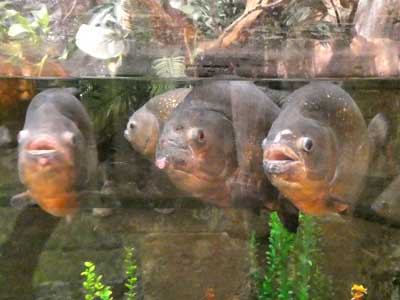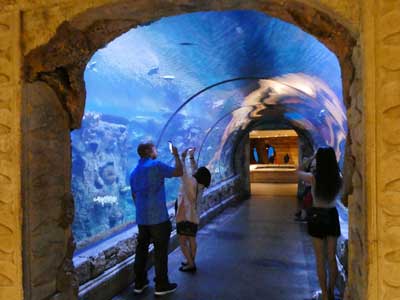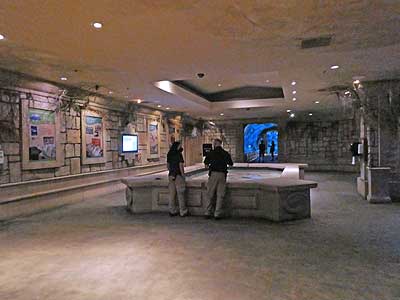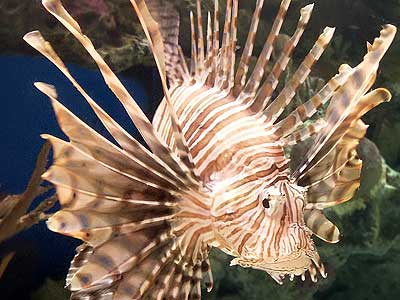LAS VEGAS (Day 3 - part 4)




Not only did the carvings look old, they were even covered with fake moss and lichen.


The Komodo dragon is the planet's largest lizard. They can get up to 10 feet long and 300 pounds. To hunt, they simply bite their prey then wait around for it to die since their saliva contains venom and bacteria. The giant lizard then eats ever last scrap of its prey... bones, hooves, fur, skin and even antlers. This one was born in captivity but doesn't look very scary here!




(right) Piranha


A giant aquarium


The first of the sharks! A blacktip reef shark ... and a bonnethead shark
The blacktip reef shark lives in the shallow waters of tropical coral reefs of the Indian and Pacific Oceans. The bonnethead (or shovelhead) is a small member of the hammerhead shark group.


The seven-headed Naga appears frequently in numerous Cambodian temples.



Patterns such as these cover the real-life temple walls at Angkor Wat.
Entering a new section:





Divers were busy cleaning the glass and various tank features of this underwater tunnel.


We entered another room where we got to "pet" some stingrays. The two largest were named Pancake and Raisin Bread.


The rays felt soft and silky. Apparently their barbs have been trimmed so visitors won’t get stung. Petting rules: be gentle, only touch them with one finger, avoid their eyes and tails.



A large tank of lionfish ... in many different colors
Lionfish come in red, brown, white and even black. Their stripes and bright coloring serve as a danger warning to predators since they have 18 venomous spines. It's basically advertising that they are capable of defending themselves.


We finally arrived at the highlight of the place... the shipwreck exhibit called Neptune’s Fury. The room was designed to resemble the interior of an old wooden ship. Large, 8-inch-thick windows looked out into Shark Reef, a 1.3-million-gallon tank which contained over 15 species of sharks including sandtiger sharks, blacktip and whitetip reef sharks, grey reef sharks, Galapagos sharks, sandbar sharks, zebra sharks, nurse sharks, green sawfish and bowmouth guitarfish (or sharkray). There were also many fish, rays and green sea turtles. The sharks generally don't hunt them since they are fed three days a week.




(right) A glass window in the floor let us watch things swim beneath us.






A sharkray
Another plexiglass tunnel extended into the giant aquarium. It was fun to sit here for a while and watch all the variety of life swim by.




Green sawfish ... This is a male shark since it has claspers (the two long white bits).
return • continue

